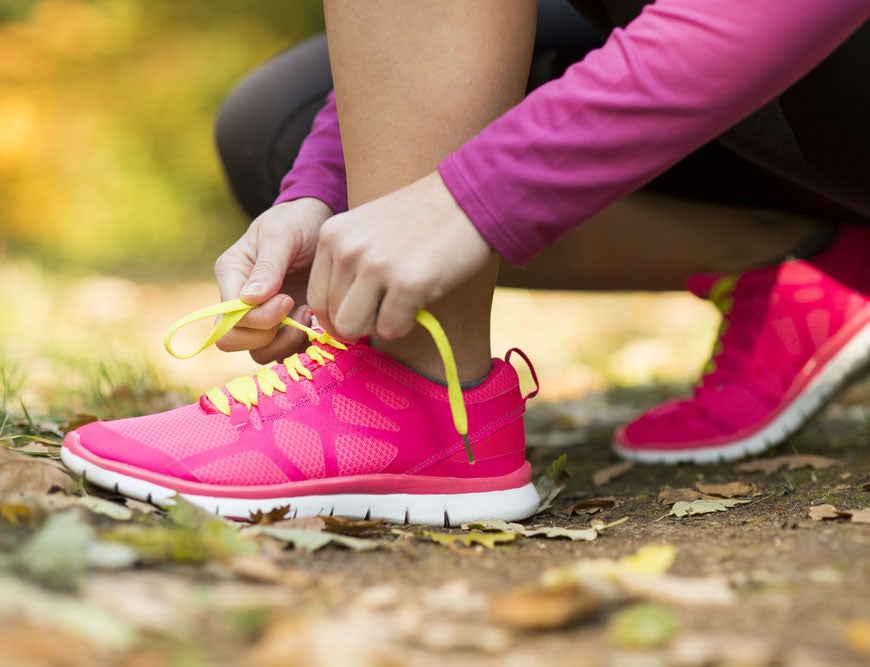3 Tips To Help You Choose the Perfect Running Shoe

Photo courtesy of Shutterstock.com

Choosing the ideal running shoe can be a daunting task—especially if you are new to the sport. Multiple brands and opinions clutter the process, making it difficult to confidently land on a choice that’s perfect for you. JoAnn Scott, running shoe specialist and avid marathoner, shares her advice on choosing kicks. Keep Scott’s tips in mind as you shop—then follow our flowchart—and you’ll be sure to find the best sneaks for your feet.
Go for a run.
Many local running stores have a treadmill near the shoe wall. A specialist will watch you run to examine your form. Depending on your level of pronation (how much your ankle tilts as your foot hits the ground) and on your body movement, the specialist will fit you with a shoe that counters potential problems and promises a successful training season.
Spoil your feet.
Try out as many pairs as there are shelves in the store! Shoes are always evolving, and every runner and foot is different. While your run bud might have some solid advice on a new pair of kicks, make sure to try out all of the candidates for yourself.
Extra credit: Remember the runner’s “rule of thumb.” Make sure you have a thumb’s width between your longest toe and the end of your running shoe to allow for swelling as you pile on the miles.
Save the date.
Running shoes don’t last forever—wearing the same pair past its heyday can lead to injuries. To avoid that painful truth, keep a log of how many miles you rack up on every pair of kicks. According to Scott, running shoes should be replaced every 400 miles.
Extra credit: Write the date you purchased your shoes on the sole with a marker. If you track your average weekly miles, calculating when you should purchase a new pair is as easy as glancing at your feet!
Use Our Flow Chart:
Click here for a pdf version of the Find Your Sole Mate Flow Chart!
JoAnn Scott is a running shoe specialist at San Diego’s Movin’ Shoes and wife to former professional runner Steve Scott, arguably the greatest male American miler in history. He held the American outdoor mile record for 22 years.